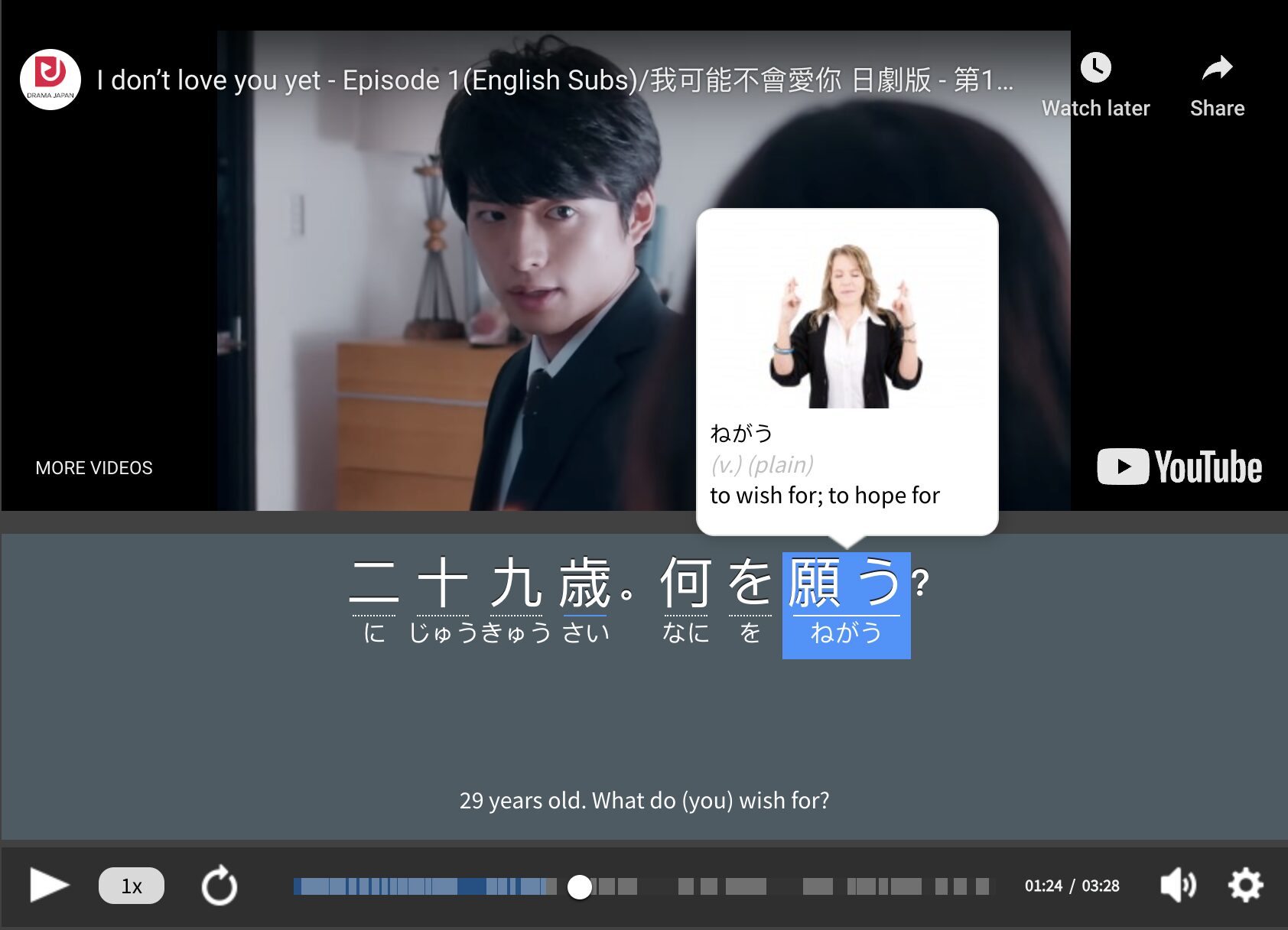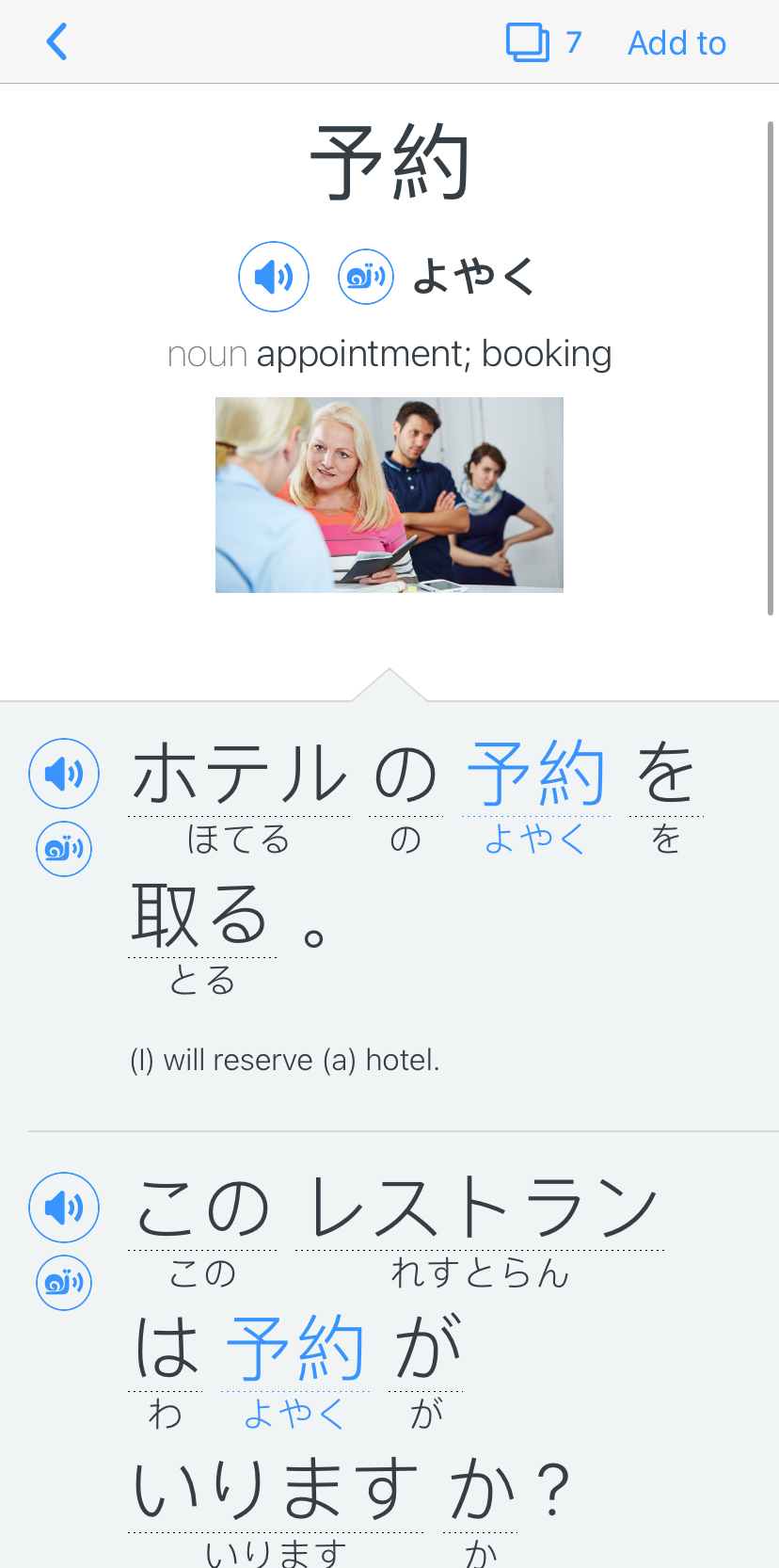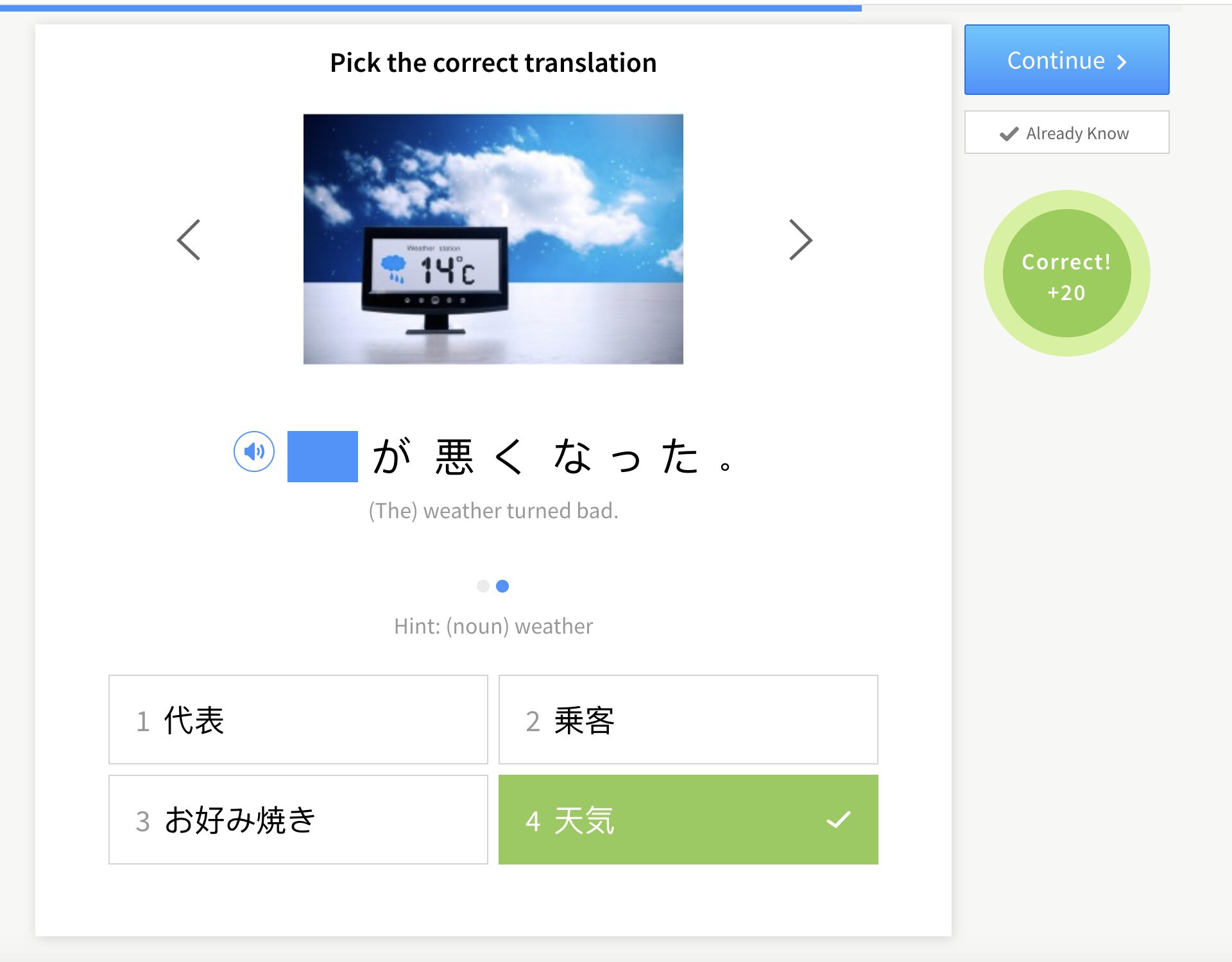Contents
- 1. Grab a Japanese textbook (or two)
- 2. Visit a website or blog for Japanese learners
- 3. Stay abreast of the news
- 4. Leaf through manga suited to your level
- 5. Enjoy some Japanese novels
- 6. Listen to podcasts
- 7. Tune in to the radio
- 8. Add Japanese music to your playlist
- 9. Watch TV
- 10. Queue up a few videos on YouTube (or elsewhere)
- 11. Join a language club
- 12. Attend an in-person class
- 13. Attend an online class
- 14. Befriend native speakers
- 15. Get a language exchange partner
- And One More Thing…
How to Become Fluent in Japanese [15 Tips]

Before you figure out the specifics of how to become fluent in Japanese, you need to define what fluency means to you first.
Is it the ability to have a conversation, write 2000+ kanji characters or never having to use a dictionary?
Whatever your definition of fluency is, I’ve got 15 tried-and-tested ways to help you get closer to your Japanese fluency goal.
Download: This blog post is available as a convenient and portable PDF that you can take anywhere. Click here to get a copy. (Download)
1. Grab a Japanese textbook (or two)
I know, I know: traditional study methods can be boring. But there are plenty of reasons textbooks designed for classroom learning still exist in the internet age.
By diving into Japanese textbooks written and thoroughly vetted by experts, you’re ensuring that you have a solid foundation to build your language skills on.
These textbooks should cover the basics like grammar, situationally appropriate language, clear examples and practice exercises.
- For grammar lessons: When it comes to Japanese grammar books aimed at learners, few can match the “Genki” books. They cover the elementary and intermediate levels.
- For learning kanji: “The Kodansha Kanji Learner’s Course” by Andrew Scott Conning gives you a good start, as it helps you master the most common 2,300 characters in a logical way. Likewise, “Remembering the Kanji 1” by James Heisig gives great tips for remembering stroke order and radical meanings.
- For general information on Japanese literature: True to its name, Giles Murray’s “Breaking into Japanese Literature” lets you get your feet wet in the classics without drowning you in a tsunami of classical Japanese. The book has parallel text, meaning it has English translations along with the original Japanese text.
2. Visit a website or blog for Japanese learners
Some of the websites I recommend include:
- TheJapanesePage: Not only is it helpful for brushing up on grammar and kanji, but it also has lots of fun videos.
- JapanesePod101 by Innovative Language: This one emphasizes listening through video and audio lessons, has interactive learning features and caters to a wider range of skill levels. If reading that makes you think “Hm, I want to know more,” here’s a more thorough review of JapanesePod101.
If you want to see written Japanese in action on the World Wide Web, you can also visit blogs in Japanese that fit your interests.
3. Stay abreast of the news
Speaking of written Japanese in action, what better way to keep your Japanese reading skills sharp than flipping through a virtual newspaper?
If you think you’re up for reading real Japanese news, you can head over to places like Asahi Shinbun and The Huffington Post JP.
Want to talk about the latest Japan-related topics but aren’t sure if your skills are up to snuff? NHK’s News Web Easy features news tidbits that have furigana accompanying the kanji, pop-up Japanese definitions that show up when you hover your cursor over the underlined words and an audio version of the article read in a slower-than-normal speed.
No matter your level, there are plenty of ways to learn Japanese through the news!
4. Leaf through manga suited to your level
Reading manga in the original Japanese is another fantastic—and entertaining!—way to learn the language. You can try to start with classics like “Bleach” and “Naruto” for familiarity’s sake, but if you’re still an absolute beginner, I suggest aiming a little lower (at least, for now).
If you’re looking for manga specifically aimed at learners, there’s “Mangajin’s Basic Japanese Through Comics.” Note that this isn’t intended as a standalone learning resource (and it shouldn’t be!), but rather as a supplement to formal instruction.
If a non-learner manga is more your cup of tea, give “Yotsuba&” a try. It’s a cute slice-of-life work about the adventures (and misadventures) of the eponymous little girl. Make sure your sugar intake is at a healthy level, because this one is packed with sweetness!
5. Enjoy some Japanese novels
Many Japanese novels are already available in English—which is fine for most people, but not-so-fine for serious language learners. If this is a learning resource you want to sink your teeth into, I suggest getting into easy Japanese novels first before diving into Haruki Murakami’s works in their original language.
On the other hand, those who are up for a challenge can try to get into classic Japanese literature. But be forewarned: like Shakespeare’s works, many of these use archaic language that even modern native speakers may find difficult to decode!
6. Listen to podcasts
Of course, studying only written Japanese won’t get you far past the elementary level. You also need to know how to comprehend oral material.
Luckily, there are many podcasts online that can help you get a feel for natural conversations between native speakers. You can choose between Japanese podcasts aimed at language learners or podcasts that native speakers listen to like these Japan Podcast Award winners.
7. Tune in to the radio
If the relatively narrow focus of most podcasts isn’t your jam, Japanese radio might whet your appetite instead.
For example, Surfmusic offers lots of Japanese radio stations you can tune in to no matter where you are in the world. And if you’re looking for specific recommendations, here’s a good list to start with.
8. Add Japanese music to your playlist
Like manga, Japanese music immerses you in the language without making you feel like you’re in a structured study environment. You can bob your head to catchy tunes and try to decipher the lyrics you hear at the same time!
Start with easy karaoke songs before moving on to more challenging material like rap lyrics. In case you want to follow along with the lyrics using written text, go to Uta-Net, look up the song title in Japanese there and print out the lyrics for your review sessions.
9. Watch TV
If you’re in Japan, try to watch as much Japanese TV as you can. Even if you don’t understand most of it, it’s still excellent practice for your ears as well as eyes.
If you’re not in Japan, don’t fret! You can also tune in to the many places to watch Japanese TV online and choose between these shows that won’t leave language learners in the dust.
And yes, anime counts as Japanese TV, so if that’s more up your alley, no problem! Learning a language should be enjoyable, after all.
10. Queue up a few videos on YouTube (or elsewhere)
Most TV episodes last for half an hour or so. If you don’t have that much time to squeeze into your hectic day, you can play a few videos from these YouTube channels and get in a handful of minutes of extra listening practice.
Another option is the language learning program FluentU.
FluentU takes authentic videos—like music videos, movie trailers, news and inspiring talks—and turns them into personalized language learning lessons.
You can try FluentU for free for 2 weeks. Check out the website or download the iOS app or Android app.
P.S. Click here to take advantage of our current sale! (Expires at the end of this month.)

11. Join a language club
If you can’t join a Japanese class for any reason, a language club can be a cheaper alternative. You’ll get most of the benefits of a formal class, though the fun and social aspect of language learning will definitely be front and center in a club.
Make sure you’re going for something language-based, such as a kanji or language exchange club. Anime and culture clubs are fun too, but probably won’t focus on the language so much.
12. Attend an in-person class
Studying alone can be jarring and difficult, especially if you have a busy lifestyle. Joining an in-classroom lesson can help you:
- Brush up on grammar and vocabulary.
- Get help on areas you’re struggling with.
- Bump up your study hours and keep up your motivation.
- Surround yourself with other people who have more-or-less the same fluency goals as you.
If you’re in Japan, check out your town’s local city hall for Japanese classes. Sometimes, they’re free for foreigners. Take advantage of these!
If you’re not in Japan, see if there are Japanese classes nearby. These might come in the form of private lessons in cafes or official courses at the local library. A university near you may even offer Japanese courses to students who aren’t necessarily enrolled full-time.
13. Attend an online class
Granted, in-person classes may not always be doable for everyone. In that case, you can take advantage of sites where you can find Japanese tutors such as:
- Verbling: Verbling allows you to vet hundreds upon hundreds of Japanese teachers and find the right one for you.
- italki: italki also allows you to practice your speaking skills with a native speaker in a safe environment. Before you sign up, make sure you read this review first.
14. Befriend native speakers
Once you get a good handle on conversational Japanese, it’s time to put your skills to the test! Ideally, you should get in some speaking practice at least once a day.
If you’re in Japan, befriend a neighbor, a co-worker or even a staff member at your local bar. They might be a little shy with you at first, owing to the potentially massive language barrier, but you can put them at ease soon enough if you make sincere attempts to communicate with them in their language.
Don’t be afraid to make mistakes! Most of the Japanese speakers I know are kind enough to gently and politely correct you if necessary. And if they’re not kind—well, then you’ll know better than to engage with someone who drains too much of your emotional energy.
15. Get a language exchange partner
We’ve already established that physical location isn’t an issue when it comes to getting in that much-needed Japanese practice.
If you’re not in Japan and there aren’t many Japanese people in your local area, you can always participate in language exchange through websites like HiNative and Tandem. Here, you can find native speakers willing to teach you Japanese in exchange for you teaching them your native language. Awesome, right?
Of course, you can always go about it the old-fashioned way and get a penpal. With this person, you can exchange letters (perfect for practicing your kanji), send each other gifts and chat online. And hey, if you ever need to visit Japan, you can ask them to keep you company throughout your stay!
With purpose, motivation and (a lot of) hard work, you can use these tips on how to become fluent in Japanese to level up your language skills.
Learning any language takes enthusiasm and effort, so enjoy the process as much as you can.
If learning Japanese starts to feel like a chore at any point, keep in mind that it’s a fantastic skill that will open doors of opportunities the higher up the learning ladder you are.
がんばってね!
And One More Thing…
If you’re like me and prefer learning Japanese on your own time, from the comfort of your smart device, I’ve got something you’ll love.
With FluentU’s Chrome Extension, you can turn any YouTube or Netflix video with subtitles into an interactive language lesson. That means you can learn Japanese from real-world content, just as native speakers actually use it.
You can even import your favorite YouTube videos into your FluentU account. If you’re not sure where to start, check out our curated library of videos that are handpicked for beginners and intermediate learners, as you can see here:
FluentU brings native Japanese videos within reach. With interactive captions, you can hover over any word to see its meaning along with an image, audio pronunciation, and grammatical information.
Click on a word to see more examples where it's used in different contexts. Plus, you can add new words to your flaschards! For example, if I tap on 予約, this is what pops up:
Want to make sure you remember what you've learned? We’ve got you covered. Each video comes with exercises to review and reinforce key vocab. You’ll get extra practice with tricky words and be reminded when it’s time to review so nothing slips through the cracks.
The best part? FluentU tracks everything you’re learning and uses that to create a personalized experience just for you. Start using the FluentU website on your computer or tablet or, better yet, download our app from the App Store or Google Play.
Click here to take advantage of our current sale! (Expires at the end of this month.)
Download: This blog post is available as a convenient and portable PDF that you can take anywhere. Click here to get a copy. (Download)











